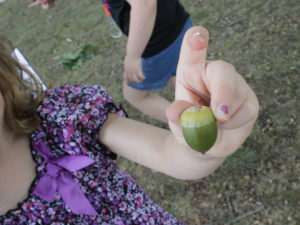STEM to STEAM and Citizen Science

To view the photo-rich magazine version, click here.
Originally appears in the Fall 2017 issue
by Melissa Guillet
I am always looking for ways to connect kids with nature. I teach art to 450 students in grades K through five for 45 minutes per week and tie the lessons to other disciplines, including the Next Generation Science Standards. As an art teacher, my curriculum tends to be more flexible than a classroom teacher’s, where whole timed blocks are devoted to one task. I developed 15 Minute Field Trips™ to get students outside learning despite busy school schedules, which I do as either part of my 45 minutes with them or as part of a 90-minute block my principal arranged in my schedule.
Through art and outside activities, the children learn about and connect with the environment. When kids have concrete experiences, like finding a caterpillar or smelling a flower, it engages their emotions as well as their desire to learn more. When they look at a leaf or a seed, they are not simply identifying it, but analyzing it. What kind of leaf is it? What does the plant provide for us? How did the seed travel there? What do insects do? How do other animals fit in? By exploring and helping out with a school garden, kids take personal ownership of the space and a vested interest in what happens there.
The activities are divided into 15-minute segments, revolving around one area of focus, such as seed mobility or animal adaptations. Sometimes we do three stations that rotate over a 45-minute block. One “field trip” we take is to explore the five senses. We look at and touch plants, discussing their colors, shapes, and textures. Next, we smell the plants, standing in a circle and passing around herbs, cherry and sassafras bark, and various flowers. In this way, I can control how many of each plant gets picked and help them avoid harmful plants. We shake plants with seeds to see if they make a sound, particularly seed pods like black locust and very mature peas. In the art room, we’ll further explore shape, color, and texture with crayons, markers, watercolor, even sponge paint and salt!
This content is restricted to subscribers only.
If you are not yet a subscriber, please consider taking out a subscription here.
If you are an existing subscriber, kindly log in or contact us at info@greenteacher.com for more information.










